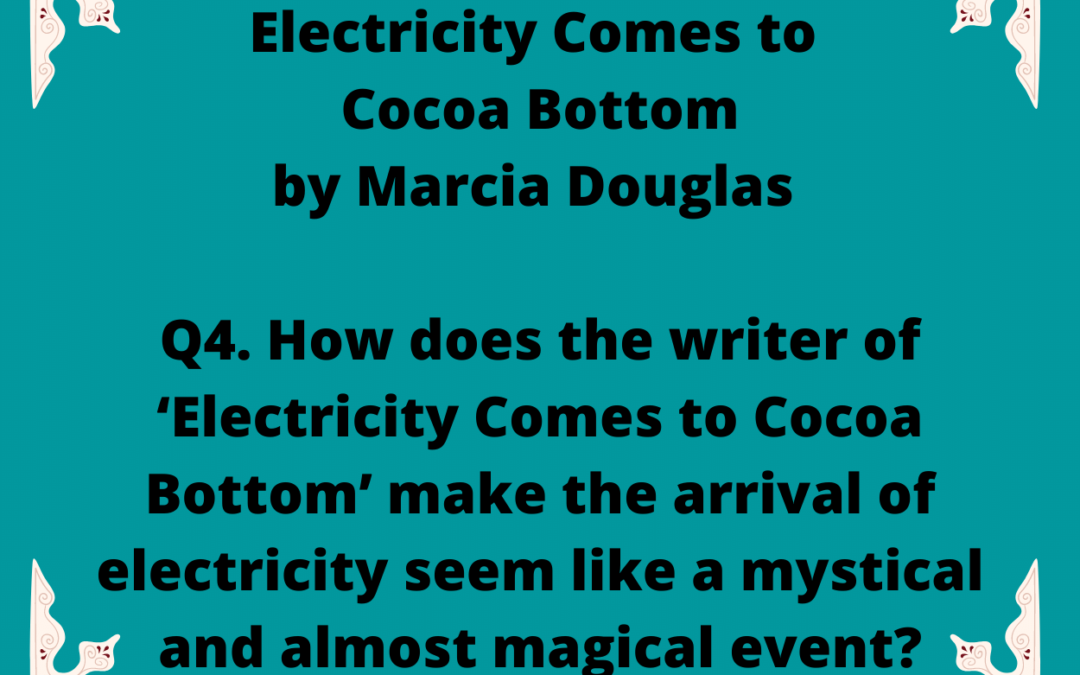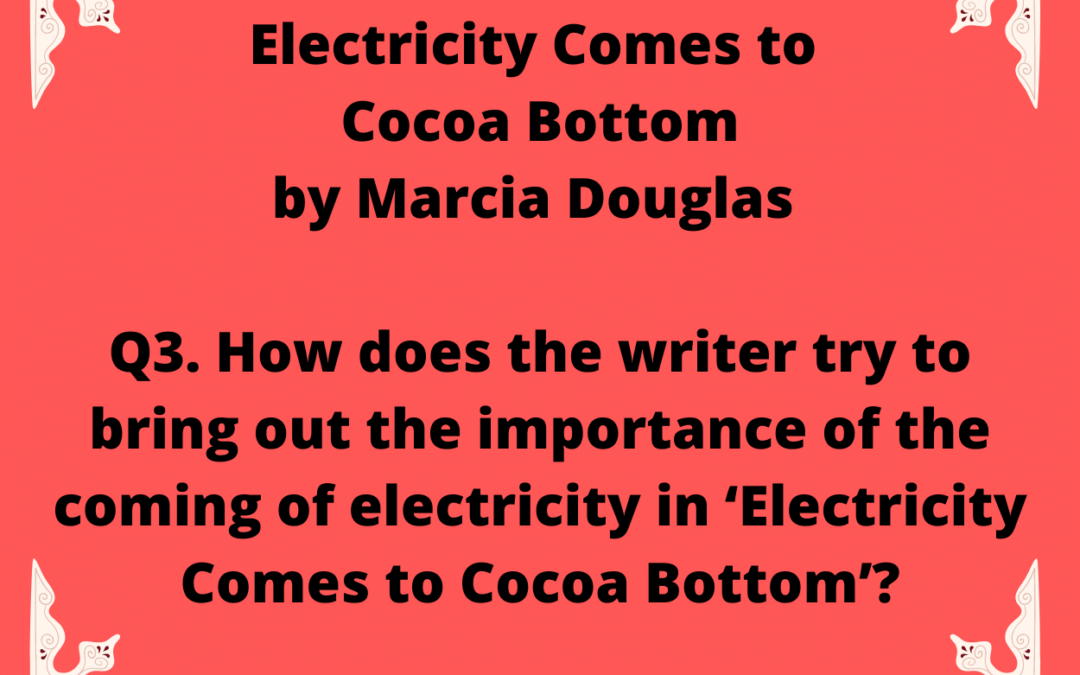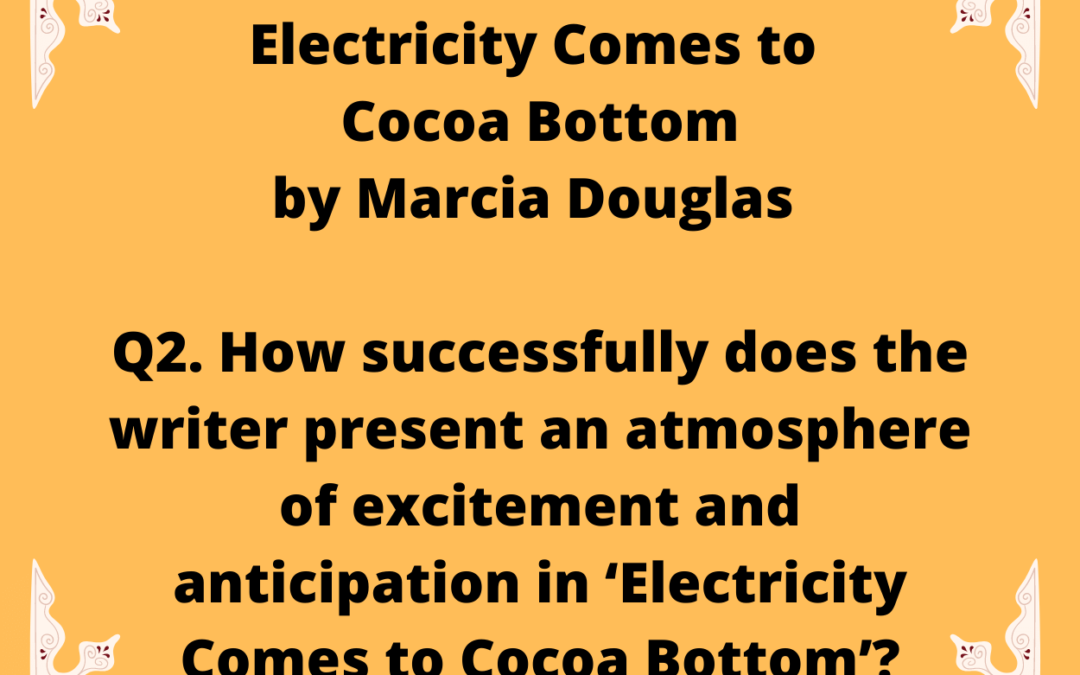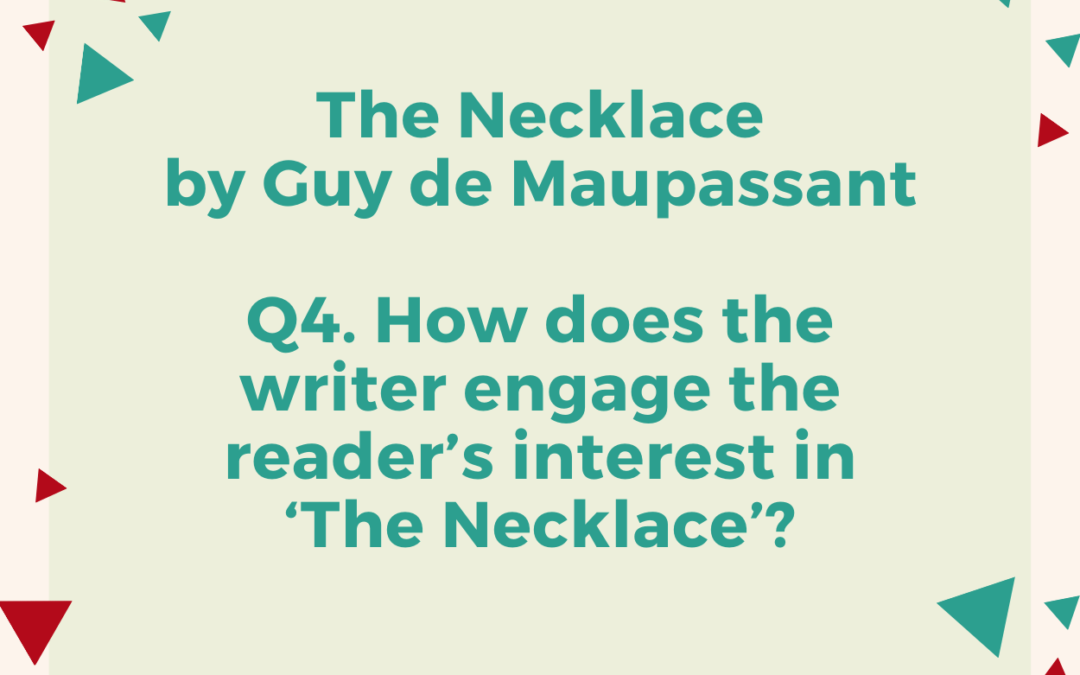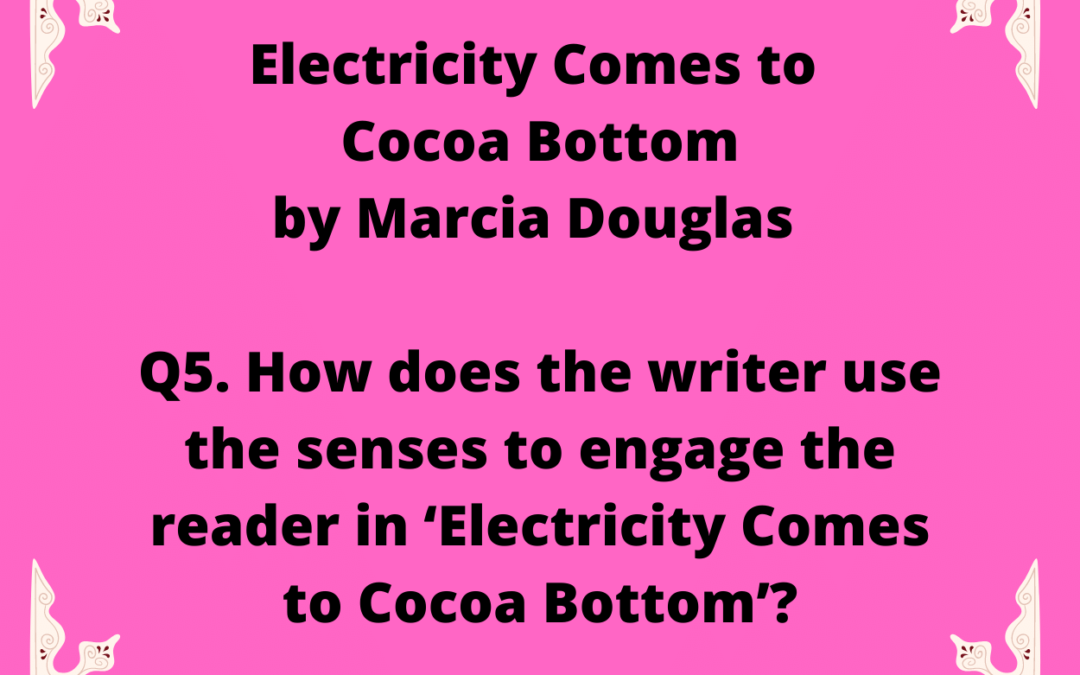
IGCSE Electricity Comes to Cocoa Bottom by Marcia Douglas Model Essays Question 05
Edexcel English IGCSE: Electricity Comes to Cocoa Bottom by Marcia Douglas
Q5. How does the writer use the senses to engage the reader in ‘Electricity Comes to Cocoa Bottom’?
In your answer, think about:
- the descriptions of light;
- the use of the sense of sound;
- the descriptions of nature;
- the writer’s use of language techniques.
You should refer closely to the text to support your answer. You may use brief quotations.
Edexcel English IGCSE Model Essay by an Expert
The writer of the poem ‘Electricity Comes to Cocoa Bottom’ uses a range of language techniques to portray the exciting events of the poem. One such technique is the use of the reader’s senses.
The poem is centred around lights, and the image of light echoes throughout the poem. There is tension between the lights of nature and the artificial lights which everybody is so excited about. The writer evokes colours when describing the sunset – “yellow, orange” – showing that nature can also put on an impressive display. The electricity cable is described with a simile that seems to suggest that it is an unwelcome human imposition on nature: it is “drawn like a pencil line across the sun”. This very visual image offers a disapproving view of human intervention in nature. The fireflies have “their lanterns off”, as if respectfully creating darkness for the artificial lights. The irony of this situation is highlighted by the use of the word “lantern” – a human invention – to describe the fireflies’ natural light. It highlights the fact that nature is able to create its own light display. The reader is engaged in this tension between nature and humanity.
The sense of sound is used to engage the reader in the excitement of the revelation of light. The first line of the stanza is a one-word exclamation: “Light!”. This reads almost like a shout, which is particularly striking following the quiet anticipation built up in the previous stanza. Onomatopoeia is the most obvious use of the reader’s senses. There is a “gasp” when the lights come on, capturing the surprise and excitement of the lights. Nature also reacts noisily, contributing to the release of tension: “fluttering” and “tweet-a-whit”. The repetition of “such a” before these descriptions of noise and movement contribute to the build-up of excitement and activity.
Following this noisiness, the final part of the poem plays on the reader’s senses by contrast. After the noisy gasping and fluttering of birds’ wings, there comes a very quiet sound: “a voice in the wind whispered”. The onomatopoeic effects of the word “whispered”, the alliteration of the letter ‘w’ and the sibilance in this phrase create a gentle tone which contrasts with the earlier lines of the stanza. This sense of quiet is emphasised by the claim that nobody “heard a sound”; even the quiet whispering on the wind goes unheard, rendering it effectively silent. These frequent shifts in tone maintain the interest of the reader, as the message of the poem seems to be constantly shifting and changing, and undermining our expectations.
In conclusion, the writer engages the reader’s senses by highlighting tensions between nature and humanity’s lights, and by creating shifts in noise and tone. The result is a poem which draws the reader into the scene and evokes reflection on the event.



